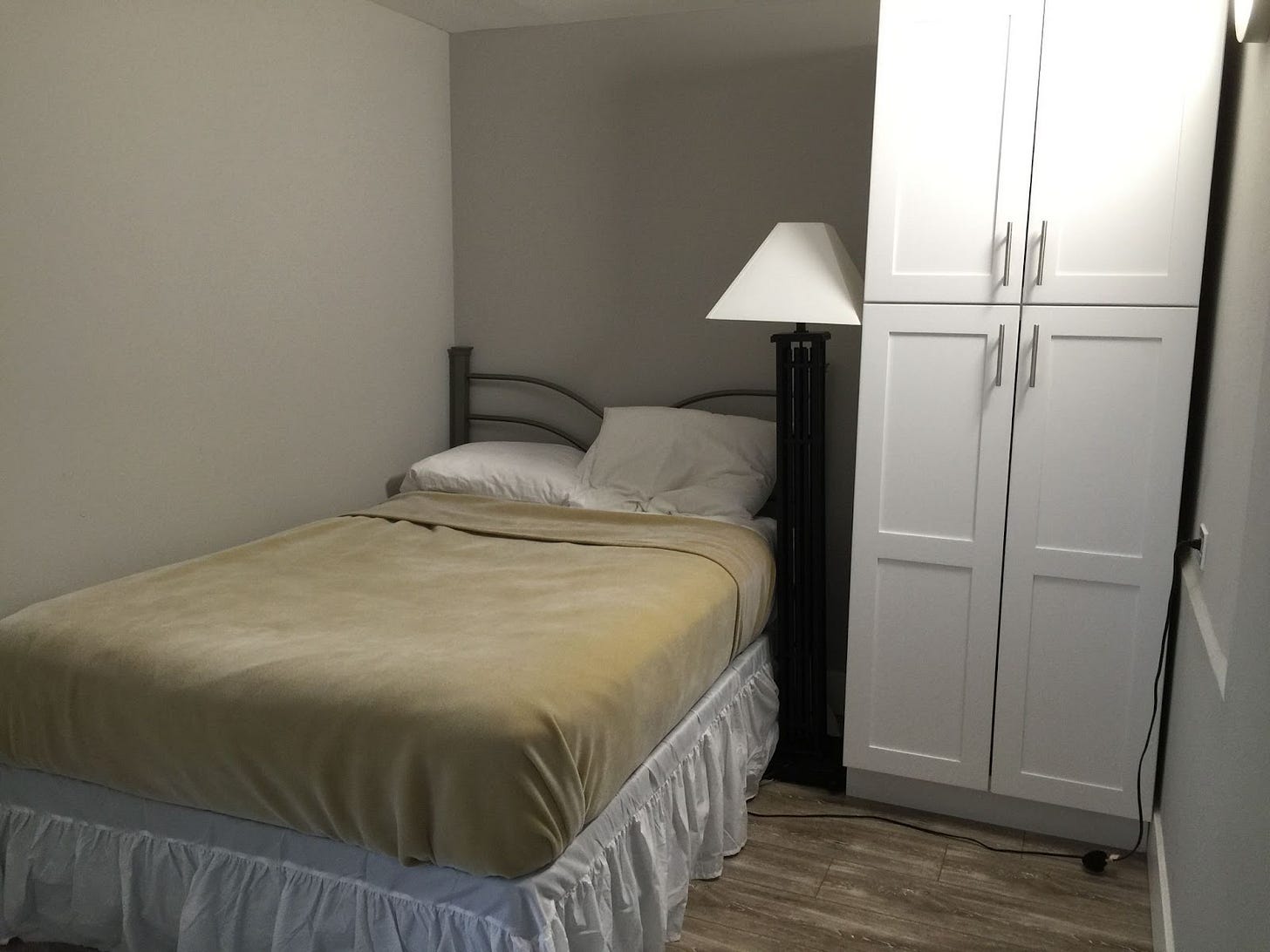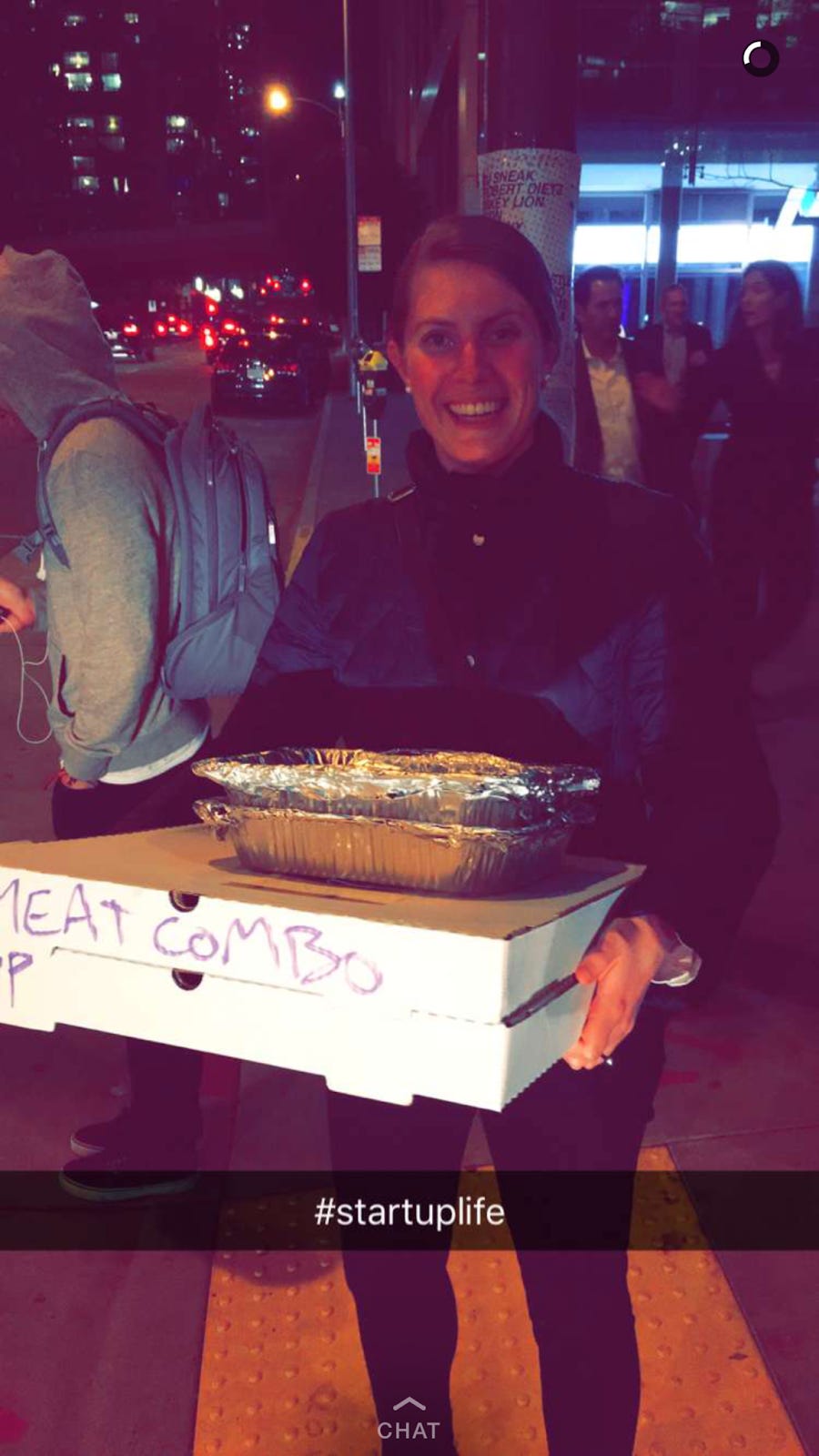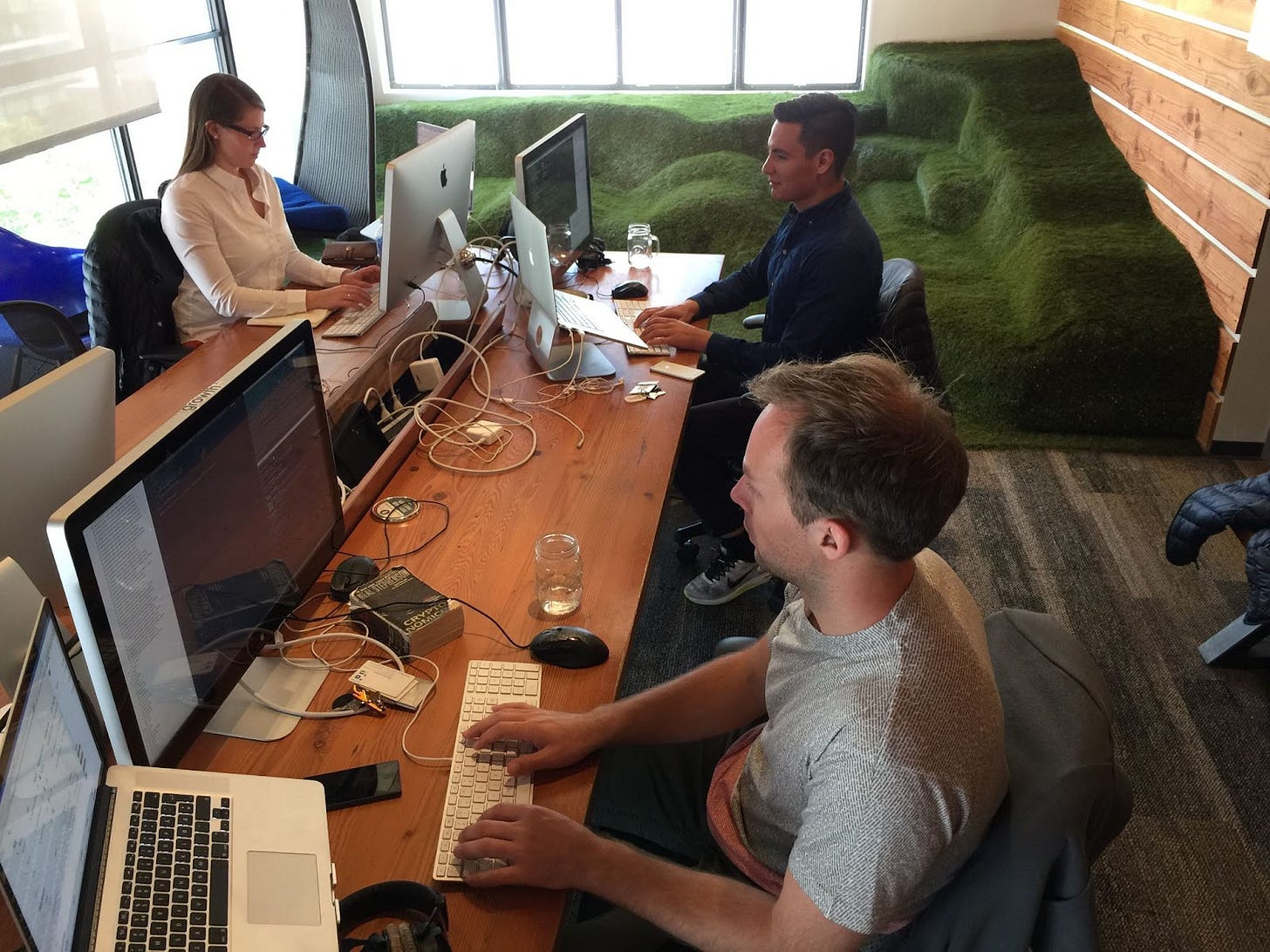"Wow, that's the best bread I've ever tasted! Where did you get it?" Little did I know that one of our bootstrapping "hacks" eight years prior would grant me multitudes of brownie points later in life.
Navigating through our startup's first year was a wild ride, especially regarding money.
We thought we had enough savings to bootstrap ourselves in San Francisco for two years. My co-founder, Nicolaj, had money tucked away from co-founding the mobile game company Dirtybit, where we'd worked together for the past two years. I saved every penny of my salary by living with my parents during that time.
But covering the living expenses for our new co-founder, Tarjei, paired with the Norwegian Krone resembling a sinking ship against the formidable wave of the US dollar, quickly eroded our two-year financial safety net. Suddenly, with our resources halved, we were thrust into a predicament of ensuring sustainability with merely 12 months of funds.
Summer 2016 loomed as our financial D-Day, prompting creativity (and frugality) to become our closest allies.
"Nicolaj said his bank account is almost empty. I told him mine was the same. Really need to sit down and view our overall spending and budget so I can relax a bit more. Talking about our finances makes me so tense. As it looks now, we won't make it past the summer without external funding." — Journal entry from 2016-01-09
This is the tenth part of sharing my Megacool startup journey. Here's an overview of the full series:
Part 1: How the Megacool journey began
Part 3: Embracing Failure – How we tested 10 different startup ideas over 10 weeks
Part 4: Hackathon 1-3: From AI travel agent to photo management adventures
Part 5: Hackathon 4-7: The messy middle
Part 8: How we built our co-founder team
Part 9: From idea to live product
👉 Part 10: Our Bootstrapping Hustle 👈 YOU ARE HERE
Part 11: How we raised $1.6m in funding
Part 12: How we got acquired
Part 13: From Alpha to Acquired: The product, growth, and business model journey
Part 14: The emotional founder roller coaster
Part 15: The epilogue: Reflections on the whole journey
We had decided to live out our startup dream in the heart of all startup action: San Francisco. The city is globally acclaimed for its startup dynamism and became our chosen arena to live out our ambitions, starkly contrasting Norway's scarce trailblazing heritage, which rarely ventured beyond its fish and fjords.
We steadfastly believed that success was not just about ideas but also location. In this place, we could rub shoulders with unicorn trailblazers and be continuously propelled out of our comfort zones.
We were accustomed to living frugally, given the short lapse of time since our student days, so bootstrapping came naturally to us.
The meaning and intensity of bootstrapped is very individual, but its essence is pure: live off your savings with as low a costs as possible to accomplish something you don't know how long it will take.
In this part, I'll take you through the different things we did to stretch our savings for as long as possible while we chased our billion-dollar startup dream.
A place to sleep
In our quest to save money upon moving to San Francisco in June 2015, we initially squeezed ourselves into a single bedroom in a larger house, costing us a 'bargain' price of $1,600 per month - a maneuver made possible thanks to the understanding and trust of our partners back home. With the city's rough guideline being $2,000 per month per bedroom (or an eye-watering $4,000 for a one-bedroom apartment), we believed we'd stumbled upon a deal.
While I started out on a mattress previously owned by the girlfriend of the guy behind the Silk Road1, I later ordered a mattress from Casper. The mattress startup competition was fierce back in 2015, and Caspar gave me 3-months to "try" their mattress. We naively thought the mattress would be resold upon return, but it was collected by a trash truck.
"We talked a lot about our living situation today. It's clear that neither of us wants to stay in the [base] flat for much longer. It feels like we're visitors, and we're not able to really relax and recharge. It's been so much better to "crash" at Arne's place." — Journal entry 2015-08-31
The kindness of friends2 offered periodic respite and a reminder of the warmth that human connection brings amidst startup chaos.
Our subsequent living situations morphed into a real-life Tetris game of creatively positioning mattresses in shared spaces, cobbling together makeshift partitions with blankets and chairs, and embarking on somewhat of a nomadic journey, moving between various apartments, our belongings ferried in overloaded Ubers.
"After spending the last few months sharing a bedroom with Nicolaj, I find it extra nice to have my own again. I'm so incredibly grateful for Arne and how he lets us crash at his apartment when he's away! I HAVE TO remember to pay this forward when I have the chance." — Journal entry from 2015-10-07

Once, I laid on top of the mattress, squeezed into an Uber XL as we crossed town.
Initially, our cost-effective living arrangements sufficed. But as our team expanded from two to three founders and the mental strain of unstable housing affected our focus, we opted to rent a three-bedroom apartment in January 2016, ensuring individual rooms for the next six months.
In reality, two of our 'bedrooms' would likely fail a fire inspection due to a lack of windows and proper doors. To compensate, we kept those doors open at night, inviting in the "fresh" air and incessant noise from the busy Geary Street below through an ever-open window in the living room. Privacy became a luxury, and earplugs became our best friends, all for the "bargain" price of $5100/month—enough to secure a luxury 4-bedroom rooftop apartment back in the "Upper East Side" of Oslo, Norway!
Again, we often had to remind ourselves why we chose to live our startup dream from San Francisco…
"I'm home alone for the first time since September and relaxing! It's so nice to be by myself. It's been really intense to live with and being with each other all the time." — Journal entry from 2016-03-06
During the move-out inspection of our shared apartment, the inspector claimed that we would be charged $250/wall for normal wear and tear. "Oh hell no!" we said and went to the paint shop next door to buy paint and painted the walls overnight.
Nutritious fuel
Navigating through San Francisco's exorbitant culinary landscape on a $15/day/person budget was a crafty dance with frugality. In a city where a mere lunch sandwich could devour that budget, we shunned the tempting, time-consuming eat-out options and embraced a meticulous, home-cooked meal strategy.
Our initial collective weekend cooking morphed into an efficient 3-week rotating chore schedule. Each of us dedicated one Sunday every three weeks to preparing bulk meals, baking hearty, fiber-rich bread (a wholesome yet scarce commodity in San Francisco), and doing all our laundry. All within a 4-6-hour time frame. This meant we invested just 1-2 hours per person per week to ensure nutritious food and fresh attire, sparing our co-working neighbors from any odor from late-night work. I'm happy to share that I had only one shirt casualty during this laundry arrangement!
By cooking food in bulk and storing it in the freezer, we were able to eat at the co-working space every weekday and save a lot of time (and money). It helped us be efficient as we were crunching and working late.
The menu—sandwiches, cereal, eggs, and bacon for breakfast, sandwiches for lunch, and a hearty hot meal for dinner— adhered to our Norwegian custom of two to three bread-based meals and early dinners, accidentally putting us on an intermittent fasting schedule before it became trendy.
The pre-portioned meals prevented overeating, and our scratch-cooking approach gave us full control over our sugar and salt intake, shielding us from the sluggishness that typically accompanies a diet rich in processed foods.
Our co-working space hosted startup events almost every day. Many of these would have leftovers we could enjoy as the event concluded. This helped stretch our "food bank", but wasn't ideal as it was often pizza or other unhealthy options—aka head sluggish foods.
Collectively providing food wasn't just something we did until we eventually raised funding (which I'll share next). Still, we continued with it until we relocated following our acquisition – four whole years!
None of the others could bake before joining Megacool, but we all unknowingly prepared for the big COVID bakeoff! One even learned how to cook to contribute to the meal train!
Looking back at the extreme bootstrapping of our first 12 months, we spent more like $8/day/person from our collective efforts! In hindsight, our culinary journey wasn't just a cost-cutting measure. It was a testament to our adaptability, fostering a spirit of collective resourcefulness and resilient camaraderie among us.
Co-working vs. office
Starting as two co-founders, we didn't consider renting a dedicated office. We needed to embrace the San Francisco serendipity, so finding the best co-working offering the right balance between grinding and community was key. We could have worked from home/rented a live/work space, but that would have defeated the purpose of being in San Francisco.
All the founders in our network recommended Galvanize, located in SOMA, off Howard & 2nd Street, next to unicorns such as LinkedIn and Slack.
Luckily, we passed their interview, which focused on how we'd contribute to the community, and started out with open seating. Since we basically lived at the co-working space Monday-Friday, we were able to find our base: an area where "Google For Entrepreneurs" had donated screens and keyboards. Our backs and necks thanked us!
At Galvanize, we met many great and influential people who helped propel us forward through conversation, leading by example or introductions.
"Someone working next to us was clearly having a bad day. I reached out and asked if he was ok. He told me his whole story and he really appreciated it." —Journal entry 2015-09-23
Being members at Galvanize also helped keep us in shape. Every day at 15:30, we'd meet at the rooftop for 3-minute pushup rounds, and a group of us also met three days/week at 7:00 for morning bouldering.
After closing our funding round, we upgraded to reserved desks and acquired monitors. We remained at Galvanize from our inception through being acquired and having to relocate.
With all our startup volatility, it was nice to feel grounded/stable at our "second home" Galvanize.
Networking
Meetings
There's lots of meet and greet happening as a founder. These can often be costly if they involve grabbing drinks or dinner. I would try my best to suggest grabbing coffee outside of lunch times or invite someone to our co-working space, which offered free coffee, although it tasted like jet fuel…
In the fall of 2015, I attended a dinner with several well-funded YC founders, many now leading unicorns. While I opted for the economical salad and a single glass of wine, the others enjoyed a lavish meal suiting their lack of budget constraints. I remember trembling when I realized we'd split the bill equally at the end of the meal.
Now, my rule of thumb is to always treat the early-stage entrepreneur I'm meeting with and verify how to best pay the bill in larger group dinner settings before ordering.
Conferences
One of our main sales strategies was through conference attendance. These can be especially costly. I would always strive to get a speaker slot, as that usually came with a free ticket and an invite to exclusive events. Through our journey, I ended up speaking at almost all Pocket Gamer Connects events, GDC 2017, and Casual Connect—all-important water coolers for game company decision-makers.
For most conferences and events, I recommend asking experienced attendees whether it's actually valuable to buy the ticket. F.ex. for GDC, there's no reason to pay the $2000 ticket fee if your goal is to do business meetings. All of those are happening in the hotel lobbies surrounding the main conference arena.
Misc
I was a huge fan of UserOnboard.com3, and when he was hosting an in-person workshop in San Francisco, I couldn't let the opportunity pass. However, I couldn't justify spending the steep price tag aimed at Big Tech workers. I reached out and was able to attend by helping during the event and only paying a symbolic amount (probably to verify my legitimate interest).
Attending the event helped me both improve our own user onboarding and further build my network.
Deferred legal fees
When incorporating, most firms would defer their fixed fee until you close your fundraising round. In 2015, the standard amount was $3,000. We learned the hard way how vital it is to clarify what conversations and asks are included in that "package" versus what will be billed separately once your funding round concludes. Handle discussions with your legal team with great care—they might seem friendly but are not your friends!
Tech stack
We didn't know we could get startup credits to kick off most of the software we used, but luckily, we got some credits with AWS through their starter package. However, today, everyone offers startup credits.
Try to negotiate as high packages as possible up front by getting to know the startup reps at the different companies. If you can sell them on your vision of bringing them tons of $$ down the road, they will be more likely to boost your starting packet. Note that the switching cost can be a time sunk, so familiarize yourself with how f.ex. AWS will scale with your business long term. If you don't manage your scale well, the free credits will quickly disappear, and suddenly, you're left with skyrocketing invoices.
"I'm feeling uncertainty creeping in when looking at our spending and my bank account. I don't feel like I have control over what we're spending money on, and it's stressing me out." — Journal entry 2015-09-02
"Realized I only have 100,000 NOK left in my account. After paying for rent, I'm left with only 10,000 NOK, assuming the exchange rate doesn't give us further headaches. I talked with Nicolaj about it today, and he said he's also impacted by this psychologically. I feel like I'm "fading away" from the financial stress." — Journal entry 2016-02-03
While we did hone the baking craft, bootstrapping and being scrappy at the expense of everything is often glorified in the startup world, but it has a dark side. For us, it was the mental toll of seeing our savings go to zero - which they eventually did.
Would all the sacrifice be worth it? Would we raise funding in time? How could we stay sane and spend our time well while our heads were such a mess?
Read the next part of the journey here.
Special thanks to everyone who’s gracefully offered their time and insight to help this get better: , , , , and 🙏
Endless gratitude to Arne Halleraker, a fellow Norwegian living in San Francisco and alum from our university.
As verified by our content marketing strategy: https://aurorakb.substack.com/p/content-marketing-magic-our-journey












I have lots of fond memories of the time we were in SF toghether 👏🏻👏🏻 Didnt realize it was this tight 🫣